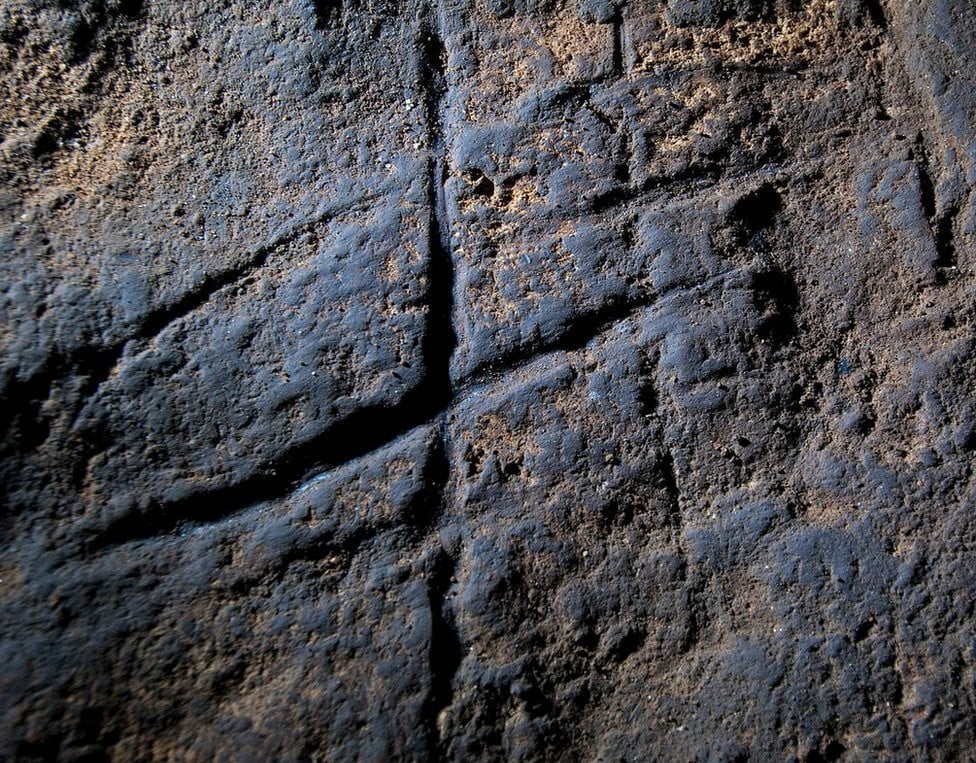
The first known Neanderthal cave art, a giant, elaborate hashtag, has been discovered in Gorham’s Cave in Gibraltar, Reuters reports. Researchers have made several important discoveries about the Neanderthals in recent years, casting doubt on the long-accepted narrative that they were merely a less intelligent, more primitive relation of early modern men, doomed to extinction by their lack of sophistication.
The Neanderthals buried their dead, cared for the sick and the old, and wore both body paint and jewelry crafted from shells and feathers. Now we know they made art too, an even more convincing sign that the species’ cognitive abilities were greater than previously thought.
A “capacity for developing complex symbolic thought.”
Prehistorian William Rendu of the French National Center for Scientific Research called the discovery (which he was not involved in) “a major contribution to the redefinition of our perception of Neanderthal culture” in an interview with Reuters. “It is a new and even stronger evidence of the Neanderthal capacity for developing complex symbolic thought” and “abstract expression,” he said, just like their cousin Homo sapiens.
No less than 11 European institutions played a role in the discovery, which was announced in the academic journal the Proceedings of the National Academy of Sciences. The hashtag engravings, a network of eight crisscrossing lines, were found on a sheet of bedrock that formed a shelf of sorts, about 16 inches above the cave floor.
The artwork was unearthed below a layer of ancient sediment littered with stone tools that are thought to have been made by the Neanderthals 39,000 years ago, around the time that the species went extinct. That would make the hashtag drawing even older.
The Markings Were Created Intentionally
Researchers do not believe early modern humans had migrated to Gibraltar at the time that the drawings were created. They also are quite sure that the markings were created intentionally, as the pattern may have taken as many as 317 careful strokes to complete.
“This engraving represents a deliberate design conceived to be seen by its Neanderthal maker and, considering its size and location, by others in the cave as well,” wrote anthropologist Clive Finlayson, director of the Gibraltar Museum, and his colleagues, in the National Academy of Sciences publication.
Archaeologists previously suspected the Neanderthals had made art, but Gorham’s Cave offers the most convincing proof to date. Spain’s El Castillo Cave contains wall paintings that are 41,000 years old, but a lack of Neanderthal artifacts at the site makes it impossible to tell if they or modern humans were responsible.
Other ancient cave art art was in the news earlier this year, as the United Nations Organization for Education, Science and Culture named France’s Grotte Chauvet, which contains 36,000-year-old drawings, a World Heritage Site.